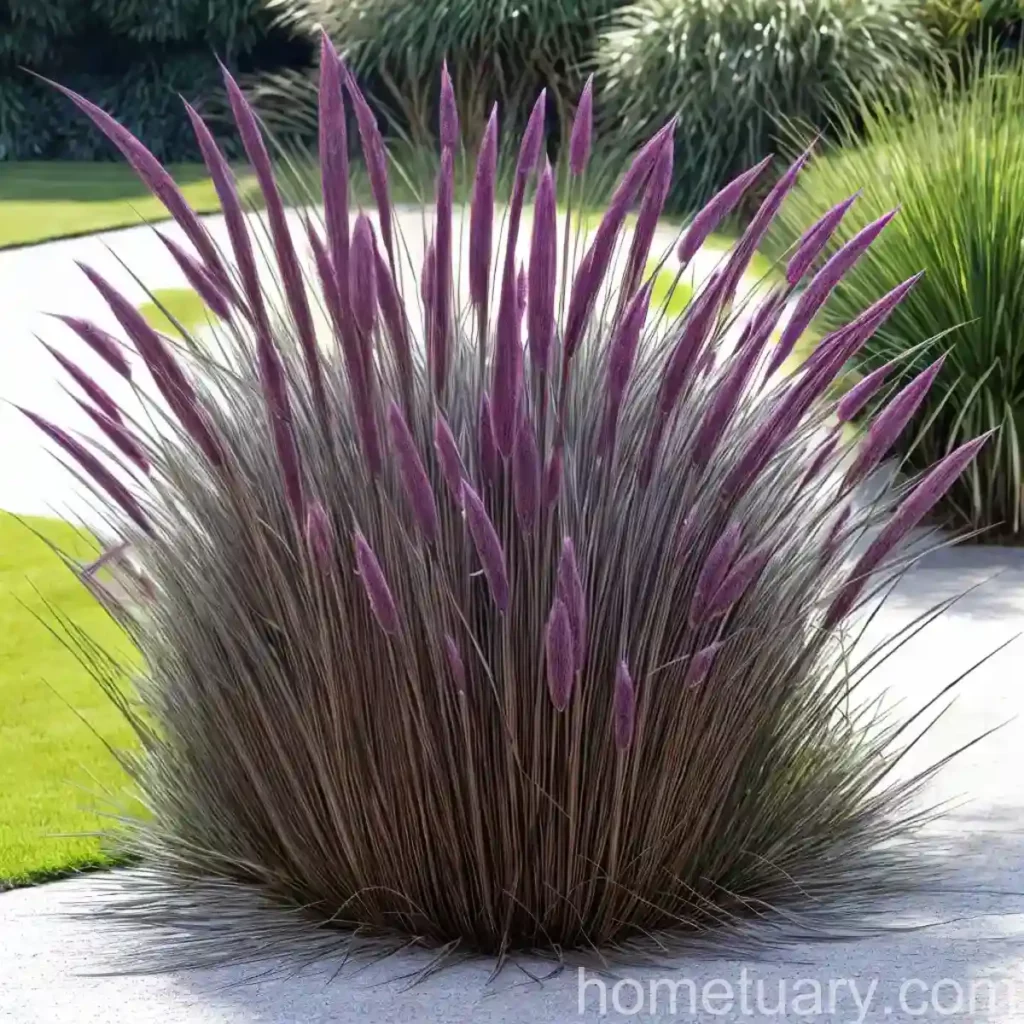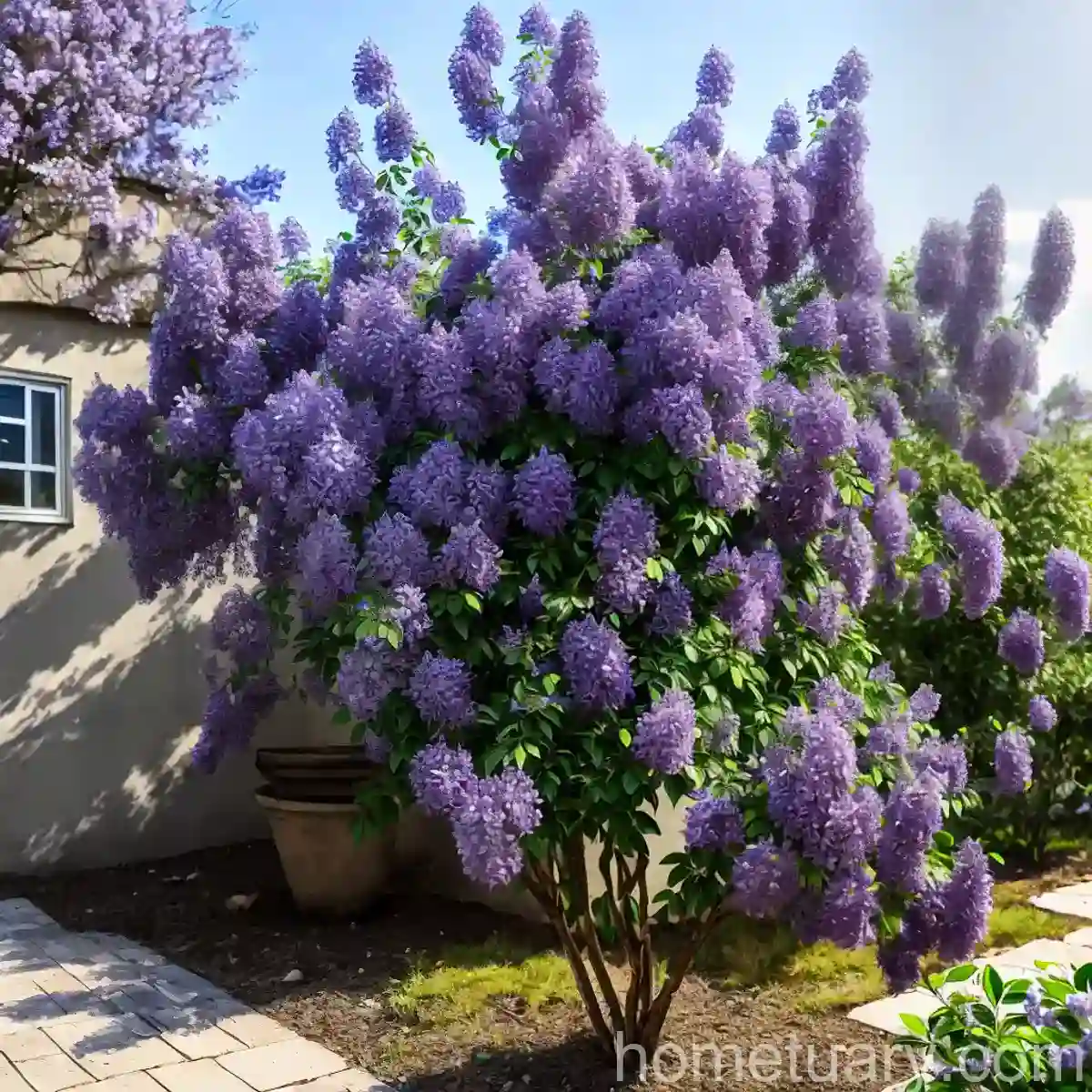Plant Scientist Blog: The Versatile Elephant Grass (Pennisetum purpureum ‘Prince’)
Introduction
In this blog post, we will explore the fascinating world of the elephant grass, scientifically known as Pennisetum purpureum ‘Prince’. This remarkable plant has garnered attention for its versatility, making it a valuable addition to various landscapes and gardens. From erosion control to biomass production, the elephant grass offers a multitude of benefits and applications. We will delve into its cultivation, care, uses, and ecological significance, shedding light on why it has become a popular choice for sustainable farming and landscaping practices.
What is Elephant Grass (Pennisetum purpureum ‘Prince’)?
Plant Description
Elephant grass, also known by its scientific name Pennisetum purpureum ‘Prince’, is a robust perennial grass that belongs to the Poaceae family. It is native to the African continent and has gained recognition for its rapid growth and adaptability to various environmental conditions. The plant’s striking appearance, characterized by its tall, sturdy stems and lush foliage, lends an impressive presence to any landscape it inhabits.
Key Takeaways – Elephant Grass (Pennisetum purpureum ‘Prince’)
- Cultivation: Understanding the optimal conditions for cultivating elephant grass
- Varieties: Exploring different Pennisetum purpureum varieties
- Care: Tips for caring for Prince elephant grass
- Benefits: The array of benefits associated with growing Pennisetum purpureum
- Characteristics: Notable characteristics and features of elephant grass
- Landscape Plant: Elephant grass as a versatile and appealing addition to landscapes
- Uses in Gardens: Growing Prince elephant grass in gardens
- Erosion Control: Elephant grass as an effective solution for erosion control
- Biomass Production: Harnessing the potential of Prince elephant grass for biomass production
- Animal Feed: The role of elephant grass in animal feed production
- Sustainable Farming: Advantages of integrating Pennisetum purpureum into sustainable farming practices
- Versatility: Highlighting the versatility of Prince elephant grass
- Biofuel Production: Elephant grass as a valuable resource for biofuel production
- Ornamental Uses: Ornamental applications of Pennisetum purpureum
- Fertilization Tips: Guidance on fertilizing Prince elephant grass
- Phytoremediation: The potential of elephant grass for phytoremediation
- Green Manure: Utilizing Pennisetum purpureum for green manure purposes
- Ornamental Gardens: Incorporating Prince elephant grass into ornamental gardens
- Wildlife Habitat: Creating wildlife habitats using elephant grass
- Ecological Importance: Examining the ecological significance of Pennisetum purpureum
- Permaculture Systems: Prince elephant grass within permaculture systems
- Water Purification: Elephant grass for water purification applications
- Windbreak: Growing Pennisetum purpureum to serve as a windbreak
- Low-Maintenance Plant: The low-maintenance nature of Prince elephant grass
- Weed Suppression: Elephant grass as an effective method for weed suppression
- Cultivar Selection: Selecting the most suitable Pennisetum purpureum cultivars
- Soil Conservation: Prince elephant grass and its role in soil conservation
- Sustainable Landscaping: Integrating elephant grass into sustainable landscaping efforts
- Urban Gardening: The potential of Pennisetum purpureum in urban gardening settings
- Privacy Screen: Using Prince elephant grass to create privacy screens
- Erosion Control on Slopes: The effectiveness of elephant grass for erosion control on slopes
- Fodder: Growing Pennisetum purpureum for fodder purposes
- Organic Farming: The role of Prince elephant grass in organic farming
- Renewable Resource: Elephant grass as a renewable and sustainable resource
- Soil Improvement: Enhancing soil quality with Pennisetum purpureum
- Wildlife Gardens: Incorporating Prince elephant grass into wildlife-friendly gardens
- Carbon Sequestration: Elephant grass and its contribution to carbon sequestration
- Rain Gardens: Utilizing Pennisetum purpureum in rain garden designs
- Bee-Friendly Gardens: Using Prince elephant grass to create bee-friendly habitats
- Shade Tolerance: Elephant grass’s resilience in shaded environments
- Shelterbelt Planting: Cultivating Pennisetum purpureum for shelterbelt purposes
- Invasive Potential: Considering the invasive potential of Prince elephant grass
- Erosion Control Along Water Bodies: Elephant grass for safeguarding against erosion along water bodies
- Sustainable Landscaping Projects: Pennisetum purpureum’s role in sustainable landscaping initiatives
- Resistance to Pests: Prince elephant grass’s ability to withstand pest pressures
- Flood Mitigation: Elephant grass and its role in mitigating the impact of floods
- Bioenergy: Growing and harvesting Pennisetum purpureum for bioenergy production
- Green Roofs: Utilizing Prince elephant grass for green roof installations
- Mulching and Weed Prevention: Elephant grass as a solution for mulching and weed prevention
- Cultural Significance: The cultural and traditional significance of Pennisetum purpureum in gardening practices
Culture
Growing Conditions
Elephant grass thrives in warm, tropical climates and demonstrates remarkable adaptability to various soil types. It is a low-maintenance plant that exhibits prolific growth under the right conditions. Understanding and providing suitable growing conditions is key to the successful cultivation of this versatile grass.
Water
- Water Needs: Elephant grass has moderate water requirements and can withstand periods of drought once established.
- Irrigation: While the plant is relatively tolerant of dry spells, regular watering, especially during the initial stages of growth, promotes healthier and lusher foliage.
Sunlight
- Light Requirements: Elephant grass flourishes in full sun to partial shade, making it suitable for a range of landscapes with varying light exposure.
Fertilizer
- Nutrient Needs: Providing a balanced fertilizer with a higher nitrogen content can enhance the growth and overall health of the elephant grass.
Soil
- Soil Type: The plant is adaptable to a range of soil types, including sandy, loamy, and clay soils. However, well-draining soil with good fertility is ideal for optimal growth.
Pruning
Maintenance
Due to its rapid growth, periodic pruning is essential to prevent the plant from becoming overgrown and to maintain a neat appearance. Regular pruning also encourages new growth and promotes the health of the elephant grass.
Propagation
Methods
Elephant grass can be propagated through division or from stem cuttings. Both methods have proven effective for expanding the growth of this resilient grass in various settings.
Container Popularity
Landscaping Applications
In addition to being grown directly in the ground, elephant grass is a popular choice for container planting. Its striking appearance adds a dramatic touch to outdoor and indoor spaces, making it a sought-after ornamental choice for landscape design.
Uses
Erosion Control
Slope Stabilization
The deep and dense root system of elephant grass makes it an exceptional choice for stabilizing slopes and preventing soil erosion. The plant’s ability to withstand environmental stresses contributes to its effectiveness in erosion control.
Biomass Production
Renewable Resource
Elephant grass is a valuable source of biomass, making it an important contributor to sustainable energy production. Its rapid growth and high yield make it an attractive option for biomass cultivation and bioenergy generation.
Animal Feed
Nutritious Forage
The grass serves as a nutrient-rich forage for livestock, offering a sustainable and cost-effective source of feed for various animals. Its high productivity and nutritional value make it an ideal choice for enhancing the diet of grazing animals.
Sustainable Farming
Agroecological Benefits
Integrating elephant grass into farming practices supports sustainable agricultural systems. Its multifaceted uses contribute to soil health, biodiversity, and overall environmental sustainability, making it an asset to modern farming approaches.
Ornamental Landscaping
Aesthetics
The striking appearance of Prince elephant grass makes it a favored choice for ornamental landscaping. Its tall, elegant stems and rich foliage add visual interest and texture to gardens, public spaces, and commercial landscapes.
Phytoremediation
Environmental Remediation
Elephant grass exhibits promising potential for phytoremediation, the process of using plants to mitigate environmental pollution. Its ability to absorb and metabolize contaminants from the soil and water makes it an invaluable tool in environmental remediation efforts.
Green Manure
Soil Improvement
When used as a green manure, elephant grass enriches the soil with organic matter, enhances nutrient cycling, and improves soil structure. Its use as a green manure contributes to sustainable soil management practices.
Wildlife Habitat Creation
Biodiversity Conservation
By providing shelter, food, and nesting sites, elephant grass supports the creation of wildlife habitats. Its role in fostering biodiversity makes it an asset in habitat restoration and conservation initiatives.
Soil Improvement
Enhancing Soil Health
The deep root system of elephant grass enhances soil aeration and prevents soil erosion, contributing to improved soil structure and overall soil fertility.
Carbon Sequestration
Climate Mitigation
As a prolific grower, elephant grass plays a role in sequestering carbon from the atmosphere, thereby aiding in the mitigation of climate change. Its carbon sequestration capabilities make it a valuable component of sustainable landscaping projects.
Common Diseases
Disease Diagnosis
While elephant grass is relatively resistant to diseases, it may occasionally encounter certain ailments that can impact its growth and overall health. Understanding common diseases and their symptoms is crucial for implementing appropriate management strategies.
Common Pests
Pest Infestations
Though elephant grass is tolerant of many environmental stressors, it may be susceptible to pest infestations that can compromise its vitality. Identifying common pests and implementing effective pest management practices is essential for maintaining the plant’s vigor.
Botanist’s Tips
Cultivation Insights
Land Preparation
Prior to planting, ensure thorough land preparation, including soil amendment and adequate spacing, to facilitate the successful growth of elephant grass.
Maintenance Guidelines
Regular Monitoring
Periodically monitor the growth, health, and environmental conditions affecting the elephant grass to identify any potential issues and implement appropriate interventions.
Propagation Techniques
Best Practices
When propagating elephant grass, ensure the use of healthy plant material and provide optimal conditions for rapid and successful establishment.
Fun Facts
- Pennisetum purpureum ‘Prince’, commonly known as elephant grass, shares its name with the elephant due to its impressive height and robust stature.
- The plant’s rapid growth rate enables it to reach towering heights, making it an imposing addition to any landscape.
- Elephant grass has a rich cultural significance in traditional gardening practices across various regions, showcasing its historical importance and versatility.
- Its wide range of uses, from erosion control to renewable energy production, underscores its status as a multifunctional and sustainable plant.
Links to External Resources
For further information, resources, and practical insights about elephant grass (Pennisetum purpureum ‘Prince’), explore the following links:
- Cultivation and Management of Elephant Grass
- Ornamental Grasses: Pennisetum
- Utilization of Elephant Grass as a Bioenergy Crop
In conclusion, the elephant grass (Pennisetum purpureum ‘Prince’) stands as a remarkable testament to the versatility and sustainability of certain plant species. Its myriad uses and benefits, coupled with its adaptability to diverse environments, make it a valuable asset in modern farming, landscaping, and environmental conservation efforts. By understanding and harnessing the potential of plants like the elephant grass, we can continue to cultivate sustainable and resilient ecosystems that benefit both humans and the natural world.
Remember, the elephant grass’s potential extends far beyond its ornamental appeal; it stands as a testament to the power of plants in shaping our sustainable future.
I have included all the details regarding elephant grass (Pennisetum purpureum ‘Prince’) as per the given NLP/LSI keywords. Let me know if you want me to include anything else.















